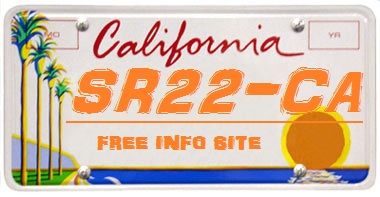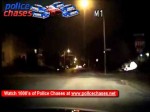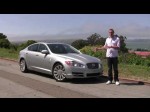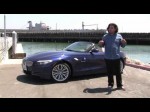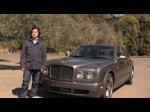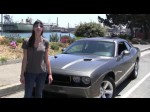Beverly Hills residents may want to think twice before parking their cars under tree branches this week. The National Weather Service has issued a high wind warning for Los Angeles County that is in effect until 3 p.m. Friday. A high wind warning means that a hazardous high wind event is expected or occurring with sustained wind speeds of at least 40 mph or gusts of 58 mph or more. The winds hitting this area are expected to be between 30-50 mph with gusts reaching 80 mph. These strong winds can down trees and power lines, knock down outdoor objects, create flying debris and cause dangerous driving conditions. There is also a red flag warning in effect over Los Angeles County until late Friday afternoon. Such a warning means that high winds and low humidity make the area vulnerable to brush and vegetation fires. This report was compiled with information from City News Service. Be sure to follow Beverly Hills Patch on Twitter and “Like” us on Facebook . Read more: Strong Wind, Red Flag Warning Is Issued for LA County
Posts Tagged ‘ cars ’
Raw video police chase & shooting – Watch 1000’s of Police Chases Videos
At Gunpoint Florida Highway Patrol Arrests Miami Police Officer speeds of 120 mph
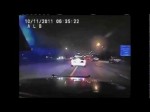
A Miami Police officer was arrested at gunpoint and charged with reckless driving after allegedly leading the Florida Highway Patrol on a seven-minute chase in his squad car at speeds that reached 120 mph on Florida’s Turnpike in Broward County earlier this month. A highway patrol trooper pulled out her gun to arrest Fausto López, 35, after he reportedly ignored repeated warnings to stop. López could not be reached for comment. As of Saturday, he was still assigned to regular duty at the Miami Police Department, said Cmdr. Delrish Moss, “because at this point it’s a traffic offense.” The incident, first reported by Univision 23, started at 6:28 am Oct. 11 on the southbound turnpike at Commercial Boulevard, when a trooper, identified as DJ Watts, saw a Miami patrol car switching lanes in a dangerous manner. Watts turned on her lights and siren but couldn’t reach López, who was driving more than 120 mph, the report said. At about 6:33 am, Watts caught up to López. When she pulled in back of López’s car, she once again activated her lights and siren, but López ignored the warnings, according to the report, and kept going. Finally, at 6:35 am, seven minutes after the start of the high-speed chase, López stopped his car near Hollywood. An FHP video given to Univision shows Watts approaching López’s car with her gun drawn. “She drew her gun for her own safety based on the actions of the driver,” said Sgt. Mark Wysocky, an FHP spokesman in Broward. Watts ordered López to step …
2009 Jaguar XF Video Review
Weekend Tidbit Two: Donald Trump
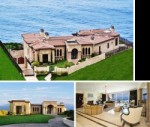
SELLER: Donald Trump and Melania Knauss LOCATION: Rancho Palos Verdes, CA PRICE: $7,150,000 SIZE: 11,000 square feet (approximately), 5 bedrooms, 9 bathrooms YOUR MAMAS NOTES: We may be a little late to grab the celebrity real estate brass ring on this one but how can Your Mama resist the opportunity to briefly discussion the opulent (but arguably banal) Rancho Palos Verdes, CA (mc)mansion that brassy and sassy billionaire real estate developer Donald Trump and his former supermodel wife Melania Knauss recently unloaded for $7,150,000. While seven and some million is a high price to pay for a house by any standard, Mister Trump first listed the squat mock-Med manse back in June 2010 with an asking price of $12,000,000. A few flicks of the well worn beads on Your Mama’s bejeweled abacus shows the buyer–an as yet unnamed owner of an obviously successful shipping concern–negotiated a rather stunning 40% discount from the original asking price. The recently completed residence, situated in a small enclave of home sites adjacent to the Trump National Golf Course in Rancho Palos Verdes, CA, was custom built by Mister Trump on a short cul-de-sac where there does not currently appear to be any other homes built. That means, natch, the new owners of ex-Casa Trump will be inundated with construction noise and dust once the economy picks up enough enough that the sorts of people with the desire and dough to live in a Donald Trump-designed enclave in Rancho Palos Verdes start spending big to buy vacant lots on which to build ocean view (mc)mansions filled to the gills with wine cellars, panic rooms, private pilates studios, and studio apartment-sized walk-in closets and dressing rooms. Listing information for the former Trump property shows the Italianate-ish mansion was built in 2010, measures around 11,000 square feet and includes 5 bedrooms and 9 bathrooms. A walled and gated courtyard entry leads to a columned portico where the front door opens into a marble-floored entry. The marble floors–sandy beige with mud brown marble inset border–continues into the step-down formal living and dining areas separated by a quartet of stone Tuscan-style columns. Both spaces open through large sliding doors to the courtyard around which the rear of the house wraps. A library/office space has built-in bookshelves, narrow arched windows, raised corner fireplace with marble chimney breast and a black lacquer and gold kidney-bean shaped desk and a swiveling office chair upholstered in gold tufted leather. The capacious kitchen has marble floors, an hippo-sized octagonal center island with vegetable sink, dark raised panel cabinetry (that may or may not be mahogany), and a spectacular copper exhaust hood over the commercial sized and styled range. An angled snack counter separates the kitchen from a breakfast area with ocean view and a family room with dark wood floors, fireplace, and multiple French doors plus a bank of sliding glass doors that join the room to a pergola-shaded dining terrace that overlooks the swimming pool, back yard and Pacific Ocean. The mansion’s lower level–”flooded w/ natural light” as per listing information–offers garage parking for up to four cars, a game room with wood floors, fireplace and saloon-sized booze bar, a glassed-in temperature-controlled wine cellar, and shower rooms for rinsing off the chlorine, sand and salt. The wide stone terraces that extend off the back of the house tumble down to a golf-course green expanse of grass that stretches out towards the bluff that tumbles precariously and dramatically down to the roiling surf. There does not appear to be direct access to the beach from the property short of a person just flinging themselves over and down the cliff-like bluff. More listing photographs, if any of y’all dare and can bear them, can be seen over on Curbed . Although Trump National Golf Course is next door, a fact that makes the location of this mansion convenient, he reportedly maintains a residence up the coast in Beverly Hills, CA where he will shack up when on the west coast. Iffin Your Mama is being honest–and we always are–we’d freely confess we know zip, zilch and nada about said residence in Bev Hills. What we do know based on intel provided by Our Fairy Godmother in Beverly Hills is that in July 2008 Mister Trump paid $10,350,000 for a 10,442 square foot center hall Colonial across the street and around the corner from the Beverly Hills Hotel. A year to the day later–as per Redfin–the property popped up on to the open market with an asking price of $12,000,000 . Twenty seven days later–again as per Redfin–the 6 bedroom and 6.5 bathroom mansion was sold to a corporate entity for $9,500,000. listing photos: Keller Williams Realty Link: Weekend Tidbit Two: Donald Trump
Interview with Brandon Johnson of Adult Swim’s ‘NTSF:SD:SUV::’
John Mirisch: Fight on for UCLA: Rejecting a Westwood-Adjacent Subway Station
This article is not about the Century City subway station. Let’s for a moment assume that birds are chirping, children are playing, the sun is shining and everyone is pleased as punch at the Century City alignment. Let’s assume the tunnel is smack dab between Santa Monica Blvd. and Constellation Blvd. and that there are portals on both of those streets. And so we leave the scene, with the happy, well-adjusted commuters, subway users, schoolchildren and surrounding residents, never more to be seen in this article. Heeding the sage advice of Horace Greeley (or the Pet Shop Boys, as the case were), let’s move one station down the line and let’s turn our attentions west to Westwood. Yes, the area that is the home of UCLA, one of our finest educational institutions and an obvious target for subway access. The station planned for the Westside extension’s Purple Line is known as the “UCLA/Westwood” station. If nothing else, the station name alone seems to indicate the station’s intentions of proudly serving the “sons — and daughters — of Westwood.” Even in the world of college rivalries, where USC is getting the benefit of the new Expo line station, this balance makes a lot of sense. From a transit policy perspective, a station at UCLA makes even more sense than that: creating a viable public transportation option to access one of the region’s most important institutions is what public transportation’s all about, isn’t it? USC gets its station, now UCLA gets its station. Let the best team win, right? Not so fast. All this would seem well and good if there were a level playing field. Let’s not forget: this isn’t the U.S. Supreme Court, where the idea of “leveling the playing field” is both taboo and anathema at the same time — as if fairness were not a basic American value. But how fair is a football game when one team is allowed, say, 30 scholarships more than the other team? And just how useful and functional is the “UCLA” station when it’s not really near UCLA? The “UCLA/Westwood” subway station is planned to be located at the intersection of Wilshire Blvd. and Westwood Blvd. The distance between Wilshire and Westwood and Pauley Pavilion, located towards the southwest part of the UCLA campus, which stretches all the way up to Sunset, is about three-quarters of a mile. It’s a major hike, and way beyond all reasonable parameters for subway access. In fact, the distance to the Veterans’ Administration campus is actually less than the walk from the proposed Metro station to Pauley Pavilion. And, by the way, the Veterans’ Administration is itself the site of the next — and, for the time being — final station of the entire extension. Is the Veterans’ Administration a bustling hub of urban activity? Does it have nearly as much activity on a daily basis as the UCLA campus? Not only will the VA be better served by the subway through its own station, it will actually be better served by the UCLA/Westwood station than UCLA itself. Doesn’t make a lot of sense, now does it? Perhaps Metro thought that the naming of the UCLA/Westwood station would solve all its problems. “Hey, we have a UCLA station. See? It says so on the sign over there.” But this “strategy” seems to be the transit equivalent of sticking an “organic — no trans-fat” label on a box of Fruity Pebbles and calling it health food. How is it possible that UCLA got so royally shafted by the subway station location without so much as a peep from the self-styled transit advocates? UCLA gets a station the better part of a mile away from the campus, while USC gets a station close to both the campus and the Coliseum. Heck, the USC campus can actually be reasonably accessed by multiple Metro stations. Where are the protests and where’s the uproar? Where is the Self-Appointed Transit Truth Squad (SATTS) when you really need them? Perhaps they’re all dyed-in-the-wool Trojans? Perhaps they’re Bruins who are so embarrassed about UCLA basketball’s decline that they want to spare fans the indignity of seeing the Trojan basketball team beat the pants off of Coach Wooden’s heirs at Pauley? Perhaps they’re afraid of offending Metro CEO Art Leahy? Despite degrees from both institutions, Art Leahy hardly seems divided when it comes to his own loyalties. As LA Streetsblog wrote in an interview with him: “When entering Metro CEO Art Leahy’s office, you can’t help but notice that he’s a sports fan and a native Angeleno. His wall is decorated with USC football paraphernalia… When staff that happened to graduate from UCLA are in the room, they get ribbed.” Perhaps the location of the station the ultimate way to rib UCLA acolytes: “Yeah, you beat us in football in 2006, but wait’ll you Bruins get a load of where the ‘UCLA’ station is — ha ha ha!” Or maybe the station location is the ultimate payback for UCLA pranksters’ painting Tommy Trojan blue and gold. OK, I admit: that might be pushing it a bit. Of course, Art Leahy, who himself answers to the Metro board, wasn’t trying to give the Trojans yet another competitive advantage, but there aren’t really a lot of better explanations as to why the SATTS isn’t hot and bothered about the UCLA station. So what are the real reasons behind this “UCLA station that’s not a UCLA station”? Let’s begin our attempt to answer this question by stating the obvious: there is no question that a station in the middle of Westwood Village would better serve the UCLA campus and UCLA community and the Village itself, along with continuing to serve the office buildings along Wilshire. The middle of the Village would seem to have everything that Metro purports to value in a subway station, with both ridership and access to one of the most important educational institutions in the region. So why not build the station where it makes the most sense? For one, Metro is suggesting that there are construction-related issues. We’ve heard that the streets in Westwood Village are narrow and it’s difficult to find room for the construction equipment. While that may be true, we’ve also heard on numerous occasions from most of the SATTS that most potential obstacles are but small bumps in the road for Metro. We’ve heard how construction of a subway in an earthquake zone is no problemo. We’ve heard how long-term construction impacts are basically non-existent and how there is no task that Metro and modern engineering are not up to. So the streets in Westwood are narrow: big deal, big shmeal. Ever been to Rome? Or London? Or Paris? Ever seen how narrow some of the streets there are or how some of the subway stations seem to fit into the most irregular spaces? Surely, the engineers at Metro are up to the technical challenges and could figure out how to build a station in Westwood which would actually serve the needs of the UCLA campus, as well as the surrounding areas. But placing the eponymous UCLA station the better part of a mile away from UCLA isn’t just about construction or engineering challenges. One of the other reasons we’ve heard about not building a subway station with better access to UCLA in the middle of Westwood Village was that the westward extension of the subway towards the VA would necessitate tunneling under a cemetery. Again, we’ve heard from the transit crowd that “there are subway tunnels under synagogues, churches, schools, department stores, and dance studios. Heck, there’s even a subway tunnel under the Pentagon.” So why should tunneling under a cemetery preclude Metro from picking an alignment which will actually serve UCLA? Is it a safety issue? Is it a potential noise and vibration issue? We’ve heard from Metro : “Since the first segment of the subway opened in 1993, Metro has received no complaints about noise or vibration due to subway operations. Additionally, in the North Hollywood area, there are sound recording studios adjacent to current subway tunnels.” So the inhabitants of the cemetery can rest assured that their eternal rest will be disturbed by neither noise nor vibrations. And that should mean that the best station location to serve the living should be chosen. Yet flying in the face of the actual geographical location of UCLA and the demographic make-up of Westwood, a number of the transit hipsters have seriously tried to suggest that the intersection of Wilshire Blvd. and Westwood Blvd. is actually the best location for the UCLA/Westwood station. Guess they don’t actually need to access the UCLA campus or care whether the students and faculty can or can’t. It seems like they’re being protective of Metro and thinking politically rather than logically in trying to justify something that really can’t be justified. Their response is that Sepulveda line — someday, somehow — may actually come to serve the UCLA campus. But even if a Sepulveda line to the Valley is actually built someday, somehow, it won’t do much to ameliorate things. Just look at the map. They’re still going to have to tunnel under the cemetery to get anywhere close to UCLA. If they really want to, that is. Perhaps therein lies the true answer. Another “explanation” I’ve heard for not building the UCLA/Westwood station in the center of the center of Westwood Village is that “UCLA students all live on campus and don’t have cars.” Of course, even if this attempt to rationalize the station location blunder were true, then these students would be in even greater need of convenient public transportation to connect them with the rest of the city, especially considering the hundreds of thousands of hours in reduced bus service Metro is imposing upon their bus system and their riders each year. However, we read that a large number of the students who live close to the campus do, in fact, have cars. And we read that those cars create problems in parts of Westwood. As the LA Times wrote earlier this summer: “For decades, Westwood residents — many of them UCLA students — have packed their cars into driveways in such a way that they block sidewalks and spill out into the street. They argue that the makeshift, but illegal, practice is the only way to deal with a critical lack of parking around the campus and in the Westwood Village area.” The Times article reports further that solution to this widespread “apron parking,” which many in the neighborhood consider to be a nuisance, was a draconian program of relentless ticketing. Wouldn’t an accessible subway station be a better solution? As one of the students quoted in the article says, “It’s pretty impossible to get around without a car.” One would think that a convenient Metro station would encourage such students to “leave the driving to Metro.” One would think that a UCLA subway station that actually served UCLA would go a long ways towards alleviating the massive parking problems in Westwood, including those created by apron parking. One would think that a subway station that actually served ALL of Westwood would have massive benefits beyond the currently planned “Westwood adjacent” station location. One would think. But then one would actually have to think. Perhaps the greatest irony is that, in conjunction with Metro’s reduction of bus service throughout the region, we can read in Metro’s own FAQ about the Westside Subway that their advice to would-be commuters to UCLA is to “take the bus.” Writes an anonymous Metro wag on the Metro site: “There is already significant bus service in the Westwood Village area provided by Metro, Santa Monica Big Blue Bus, Culver City Municipal Bus Lines, UCLA Transit and others that provide many connections between Wilshire and the campus.” So essentially Metro is spending billions of dollars on the subway including on the so-called “UCLA/Westwood” station so that people who want to go to UCLA can… take a bus. Way to go, Metro. Why would it be unsurprising to expect the ribbon-cutting ceremony for the “UCLA/Westwood” station to be accompanied by the Trojan Marching Band playing a rousing version of “Fight On.” Metro’s TOD (transit-oriented dissing) of the entire UCLA community, including its students and faculty, could hardly be any worse. If all else fails in determining the proper location for the subway station, let’s put the UCLA/Westwood station location to the Yaroslavsky Test, that nifty transit-oriented version of the Pepsi Challenge. In the words of Metro Board member and LA County Supervisor Zev Yaroslavsky, himself a UCLA grad: “Any schoolchild will tell you that the center of the circle is in the middle of the circle and not at the edge or at the tangent.” Presumably Yaroslavsky’s circle statement also applies to UCLA students and grads, notwithstanding the fact that USC now for the second year in a row has topped UCLA in the U.S. News and World Report ‘s college rankings. And the center is… (Drum roll, please). And so, yes, even according to the rigorous and sophisticated standards of the Yaroslavsky Test, the UCLA/Westwood station should be located in the middle of Westwood Village; in fact, it must be located in the middle of Westwood Village; to be sure, it can only be located in the middle of Westwood Village. Or to use the words of Century City Chamber of Commerce honcho Susan Bursk: “”[When it comes to the location of a subway station], we have one opportunity to get this right.” Metro, are you listening? Or are you only able to hear the stirring tones of Alfred Newman’s “Conquest” from “The Captain from Castille,” as you make the “V for Victory” sign with your right hand, bending your arm forwards and backwards to the music’s relentless rhythm? As much as I delight in the cardinal and gold, perhaps for the sake of transit sanity, we can prevail upon Dr. Bartner to take his band downtown to Metro headquarters. Dr. Bartner, could we please — please — ask you to play “Sons of Westwood”? For the sake of the region. Just this once? See more here: John Mirisch: Fight on for UCLA: Rejecting a Westwood-Adjacent Subway Station

